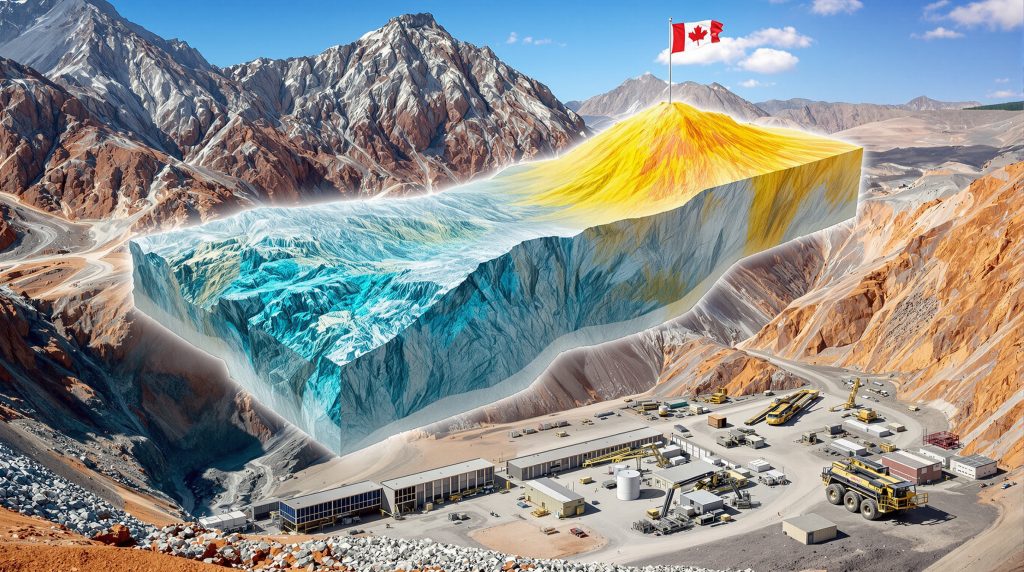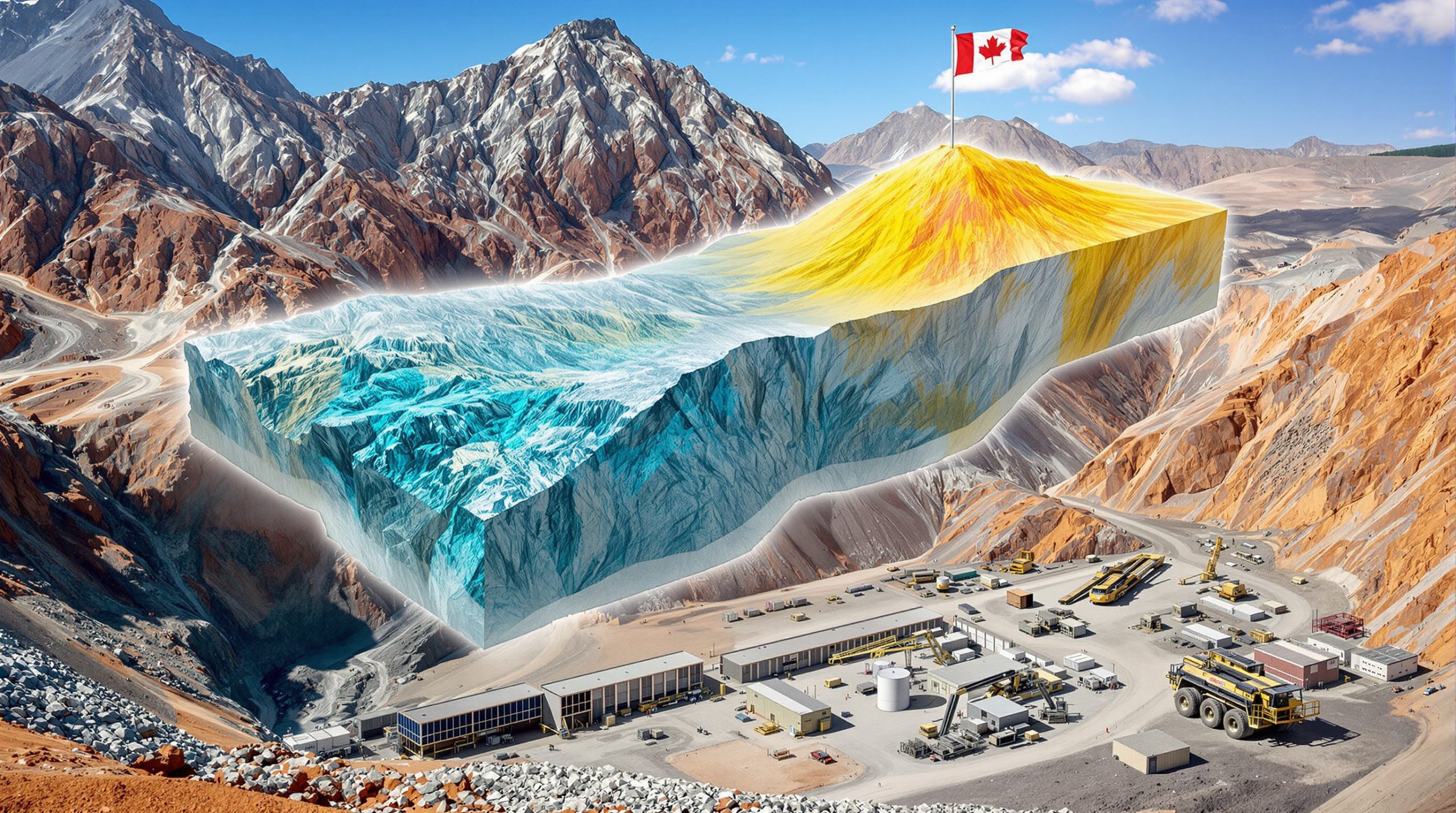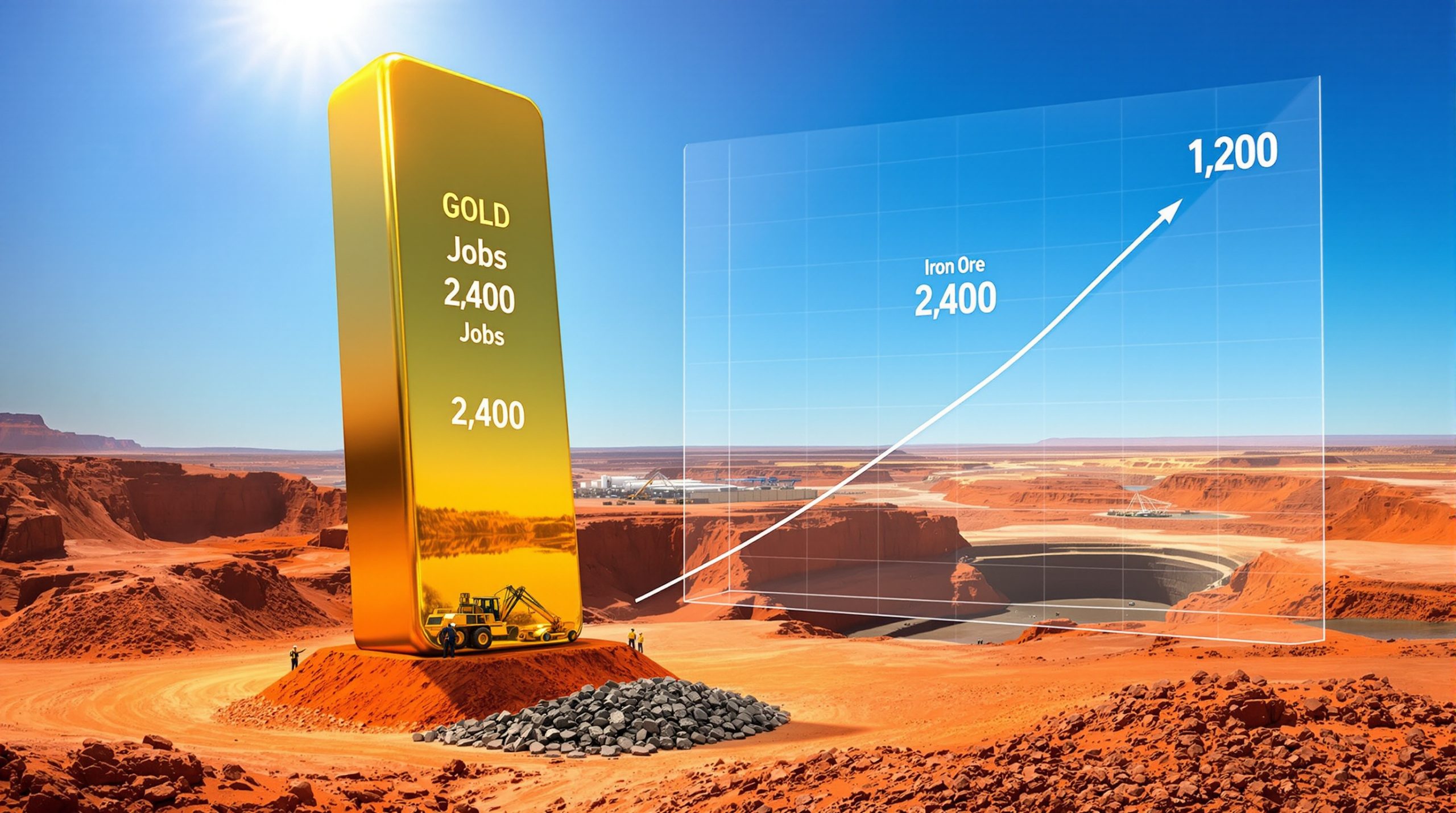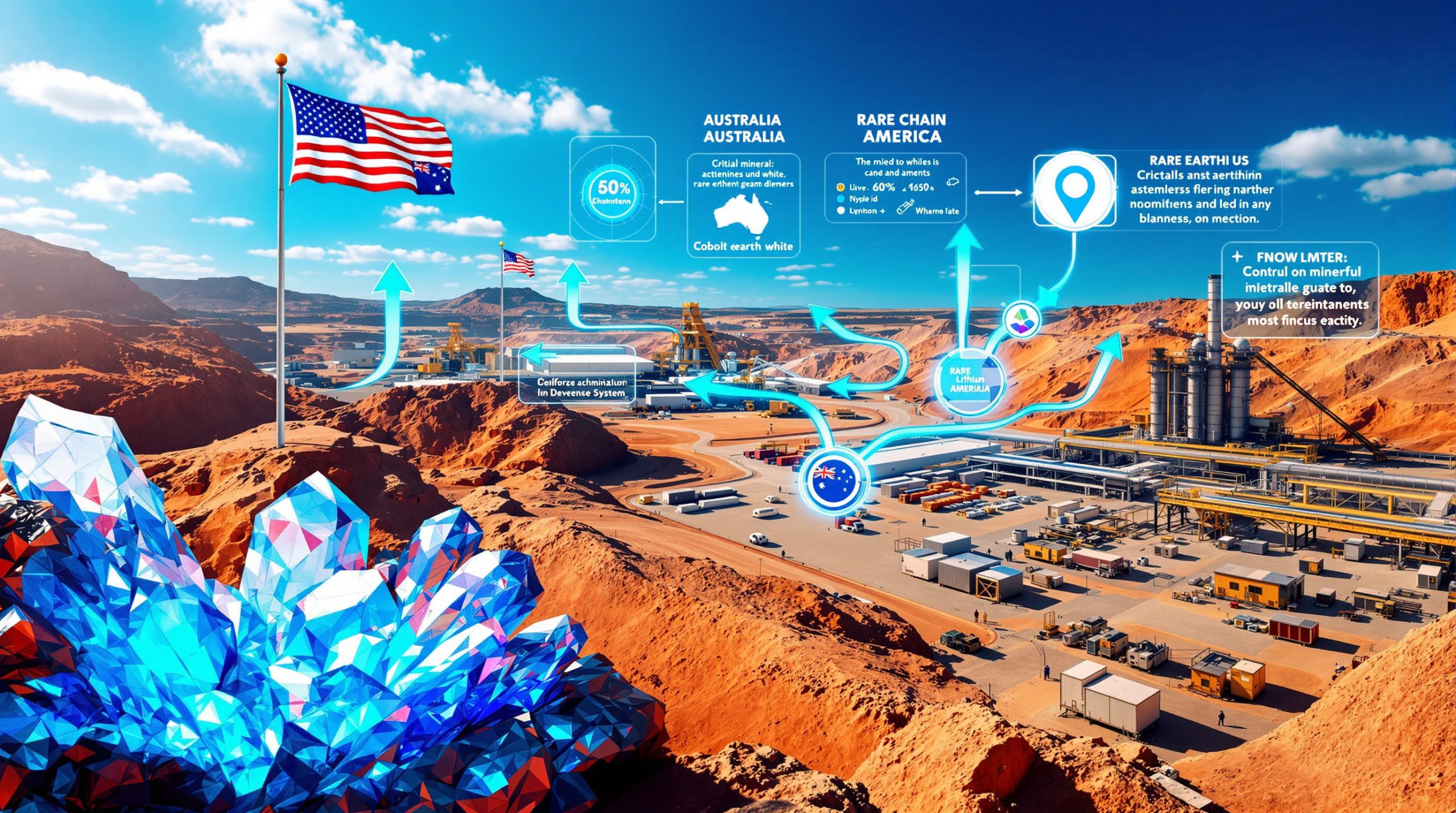Highland Valley Copper Mine Life Extension Project: A Strategic Copper Investment
The Highland Valley Copper (HVC) mine life extension project represents a significant investment by Teck Resources to extend the operational lifespan of one of Canada's largest copper mines until 2046. Located in British Columbia, this project involves substantial upgrades to existing infrastructure, increased waste-stripping capabilities, and strategic pit development to access higher-quality ore reserves. With recent copper price prediction trends suggesting continued strong demand, the timing of this investment appears strategic.
Why is the HVC Life Extension Project Significant?
Economic Impact on British Columbia
The extension project stands as one of the largest critical minerals investments in British Columbia's history. With capital expenditure between $2.1-$2.4 billion, the project will generate approximately $500 million in yearly GDP throughout its operational life. This economic contribution strengthens British Columbia's position in the global mining sector while supporting local communities through sustained employment opportunities. Furthermore, the project aligns with broader copper investment strategies focused on securing long-term supply.
Employment Generation and Workforce Development
The project creates substantial employment opportunities across multiple phases:
- Construction Phase: Approximately 2,900 jobs during the initial development period (2025-2028)
- Operational Phase: Support for 1,500 direct long-term positions through 2046
- Indirect Employment: Thousands of additional jobs in supporting industries and local businesses
Strategic Importance for Copper Supply
With global copper supply forecast indicating potential shortfalls in coming years, the HVC extension helps secure a stable North American copper supply for decades. The project's average production of 132,000 tonnes per year represents an important contribution to meeting growing global demand for this critical mineral. As outlined in Teck Resources' official announcement, the project is timed to address anticipated supply gaps.
How Will the Mine Operation Change Over Time?
Phase 1: Current Valley and Lornex Pits (2025-2027)
This initial phase focuses on mining higher-grade material from existing pits while preparing for expanded operations. The proportion of ore from the Lornex pit will increase during this period, delivering higher copper grades while infrastructure development begins to support the longer-term mine plan.
Key activities include:
- Initial capital investments in fleet and facilities
- Maintaining current ore throughput while beginning waste stripping
- Strategic ore extraction to maximize early returns
Phase 2: Transition Through Satellite Deposits (2028-2033)
This critical transition phase involves a significant increase in material movement as the operation accesses the Bethlehem and Highmont satellite orebodies while completing the Valley pit pushback. This phase represents the most intensive period of the operation.
Operational characteristics include:
- Increase to approximately 200 million tonnes of total material moved annually
- Temporary decrease in average ore grade during transition period
- Significant increase in waste-stripping activities to access future high-quality ore
- Complex operational scheduling to maintain consistent mill feed
Phase 3: Valley Pit Dominance (2034-2046)
The final and longest phase of the project will see the Valley pit become the primary source of high-quality ore with improved grades. This phase represents the reward for the earlier investment in waste stripping.
Key attributes include:
- Reduction in total material moved to approximately 100 million tonnes annually
- Minimal waste tonnes mined from 2039 through end of mine life
- Gradual reduction in mining intensity while maintaining consistent ore output
- Higher recovery rates due to improved ore quality
What Technical Improvements Will Be Implemented?
Mining Fleet Upgrades
The extension project includes significant investments in modernizing the mining fleet with more efficient equipment. These upgrades are critical for handling the increased material movement requirements during Phase 2.
Technical enhancements include:
- Larger capacity haul trucks to optimize material movement
- Fuel-efficient equipment to reduce operational costs
- Advanced fleet management systems for optimized dispatch
- Autonomous capabilities for select equipment to improve safety and efficiency
Processing Facility Enhancements
The processing facilities will undergo significant upgrades to handle the variable ore characteristics throughout the mine life while maintaining consistent throughput.
Key improvements include:
- Grinding Circuit Optimization: Advanced controls to handle variable ore hardness
- Recovery Efficiency: Enhanced flotation circuits to maximize copper recovery from lower-grade materials
- Throughput Management: Automated systems to maintain consistent 50 million tonnes annual ore processing
- Quality Control: Advanced ore sorting and blending systems to manage feed quality
Environmental Infrastructure Development
Substantial investments will be made in environmental infrastructure to ensure responsible operation through 2046.
Major components include:
- Tailings Storage Capacity: Expanded facilities engineered for long-term stability
- Water Management Systems: Enhanced water recycling and treatment capabilities
- Power Infrastructure: Upgraded electrical systems with renewable integration options
- Dust Control: Advanced suppression systems throughout the operation
What Environmental Considerations Are Addressed?
Regulatory Compliance and Permitting
The project received its environmental assessment certificate and required permits in June 2025 following comprehensive review processes. These approvals demonstrate compliance with British Columbia's stringent environmental protection standards and regulatory requirements. The detailed environmental assessment process included extensive public consultation and thorough technical reviews.
The permitting process involved extensive consultation with:
- Provincial and federal regulatory agencies
- Indigenous communities
- Local stakeholders and municipalities
- Environmental advocacy groups
Waste Management Strategy
The extension project incorporates advanced waste management techniques to minimize environmental impact throughout its operational life.
Key strategies include:
- Strategic Waste Placement: Engineered designs to reduce footprint and facilitate future reclamation
- Progressive Rehabilitation: Ongoing site restoration throughout operational life
- Long-term Stability Planning: Advanced engineering for post-closure environmental protection
- Innovative Technologies: Adoption of emerging waste treatment methods to reduce environmental risks
Water and Energy Management
Water and energy efficiency form core components of the operational strategy, with significant investments in conservation technologies.
Implementation plans include:
- Water Conservation: Closed-loop systems to minimize freshwater consumption
- Energy Efficiency: Implementation of energy-saving technologies to reduce carbon footprint
- Monitoring Programs: Comprehensive environmental monitoring throughout the project lifecycle
- Climate Adaptation: Infrastructure designed to withstand changing precipitation patterns
What Are the Implementation Timelines?
Pre-Construction Activities (Completed)
The project has already completed several critical preliminary phases:
- Technical Studies: Comprehensive engineering and optimization work
- Environmental Assessment: Thorough review process resulting in certification
- Permitting Process: Acquisition of all necessary operational permits
- Community Engagement: Extensive consultation with local stakeholders
Construction Phase (2025-2028)
The most intensive development period will occur over approximately three years:
- Capital Investment Period: Major expenditures concentrated between second half of 2025 and 2028
- Infrastructure Development: Sequential implementation of facility upgrades
- Operational Transition: Phased implementation to maintain production during construction
- Workforce Development: Training programs for expanded operational requirements
Long-Term Production Schedule
The operational timeline is clearly delineated across three distinct phases:
- Phase 1 (2025-2027): Higher-grade material from current pits
- Phase 2 (2028-2033): Transition through satellite deposits with increased waste stripping
- Phase 3 (2034-2046): Long-term production from high-quality Valley pit ore
How Does This Project Compare to Other Copper Mine Extensions?
Production Scale Comparison
The HVC extension maintains the operation's position as one of Canada's largest copper producers, with annual output comparable to major global operations.
Comparative metrics include:
- Average production of 132,000 tonnes per year places it among significant North American copper assets
- Total life-of-mine production exceeds 2.5 million tonnes of copper
- Processing capacity of 50 million tonnes of ore annually ranks among larger global operations
- Waste-to-ore ratio during Phase 2 represents industry-standard practice for major pit expansions
Investment Magnitude
With capital expenditure between $2.1-$2.4 billion, this project represents one of the larger mining investments in recent Canadian history.
The investment breakdown includes:
- Major fleet upgrades and replacements
- Processing facility modernization
- Environmental infrastructure development
- Supporting infrastructure and utilities
- Engineering and project management
Technological Innovation
The project incorporates advanced mining technologies and processing innovations that position it at the forefront of modern copper mining practices.
Key technological aspects include:
- Digitalization of operations through integrated systems
- Predictive maintenance programs to maximize equipment availability
- Advanced metallurgical controls to optimize recovery
- Automated quality control systems throughout the process
What Are the Potential Challenges and Mitigations?
Operational Challenges
The project team has identified several operational challenges and developed comprehensive mitigation strategies.
Key challenges and solutions include:
- Variable Ore Hardness: Implementation of advanced grinding circuit controls and ore blending systems
- Waste-Stripping Requirements: Strategic fleet allocation during Phase 2 to manage higher waste volumes
- Grade Fluctuations: Sophisticated ore control and blending systems to maintain consistent metal production
- Maintenance Planning: Predictive systems to minimize unplanned downtime
Market Considerations
The long-term nature of the project requires robust strategies to address market volatility.
Mitigation approaches include:
- Copper Price Volatility: Conservative price assumptions in financial models
- Supply Chain Resilience: Diversified procurement strategies and strategic inventory management
- Workforce Availability: Comprehensive training and development programs
- Energy Cost Management: Implementation of efficiency measures and potential renewable integration
Environmental Risk Management
Environmental considerations remain paramount throughout the project lifecycle.
Risk management strategies include:
- Climate Change Adaptation: Infrastructure designed to accommodate changing precipitation patterns
- Regulatory Evolution: Flexible compliance systems to adapt to evolving environmental standards
- Community Expectations: Ongoing stakeholder engagement and transparent communication
- Water Management: Advanced monitoring and control systems to protect water resources
Future Outlook for Highland Valley Copper
The Highland Valley Copper mine life extension project represents a significant commitment to sustainable copper production in British Columbia. By extending operations through 2046, Teck Resources is positioning this historic mining district to continue its contribution to both the regional economy and global copper supply chains. As analysts note a significant copper demand surge in coming years, the project appears well-timed.
The phased implementation approach demonstrates strategic foresight in managing the transition between different ore sources while maintaining operational continuity. With its substantial economic benefits, technological innovations, and environmental safeguards, the HVC extension project exemplifies modern mining's potential to balance resource development with sustainability considerations.
As global demand for copper continues to grow through energy transition initiatives and infrastructure development, the extended life of Highland Valley Copper will help ensure stable supply of this critical mineral from a jurisdiction with strong environmental and social governance standards. The project also complements other US copper investment insight developments occurring across North America.
Disclaimer
This article contains forward-looking statements regarding production forecasts, economic impacts, and technological developments. Actual results may vary based on geological conditions, market factors, regulatory changes, and other variables beyond current prediction capabilities. Readers should consider this information as general background rather than specific investment advice.
Looking for Real-Time Alerts on Major ASX Mineral Discoveries?
Gain an immediate edge in the market with Discovery Alert's proprietary Discovery IQ model, which provides instant notifications when significant mineral discoveries are announced on the ASX. Visit our discoveries page to understand the substantial returns that major mineral discoveries have historically generated.




